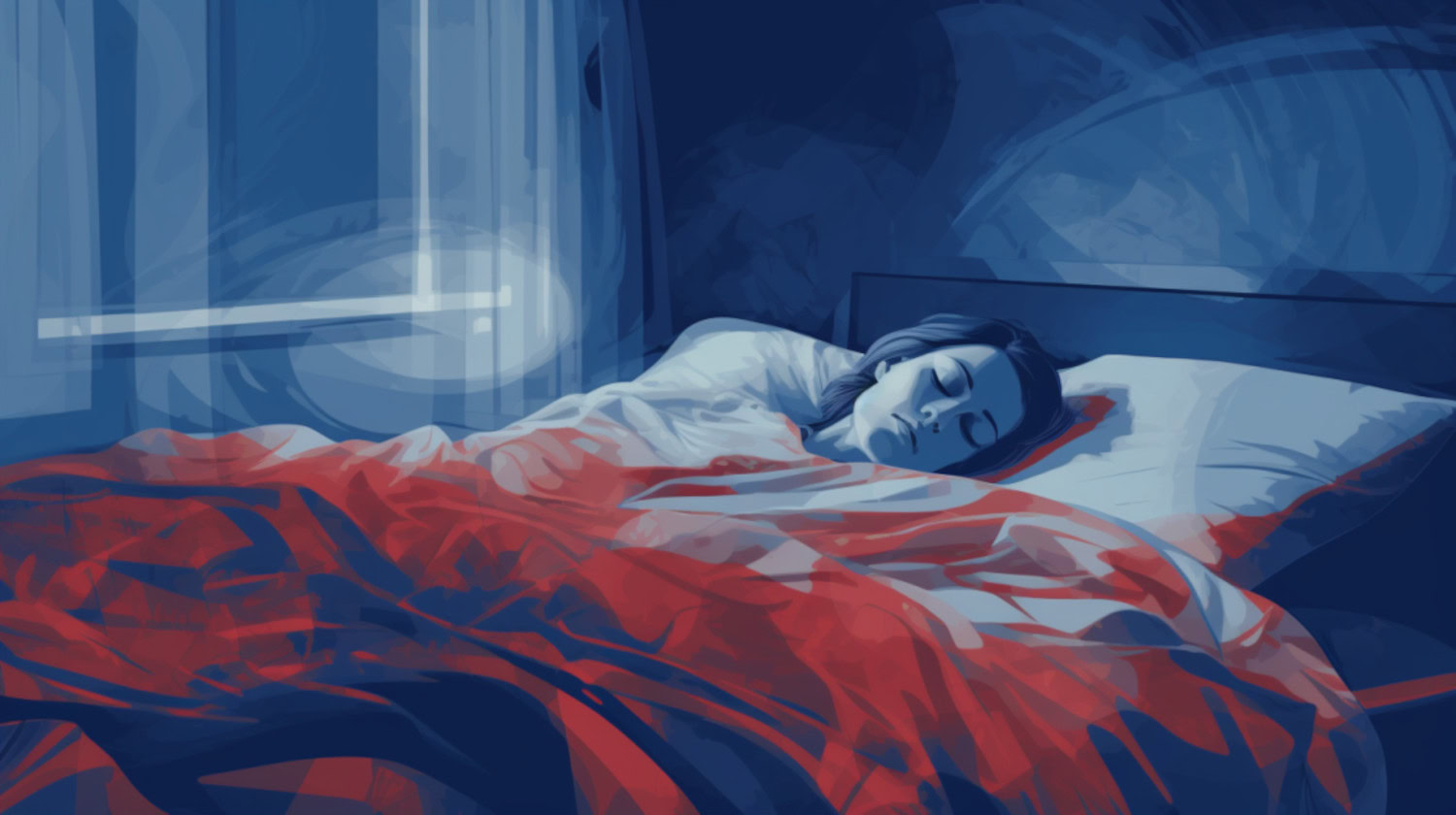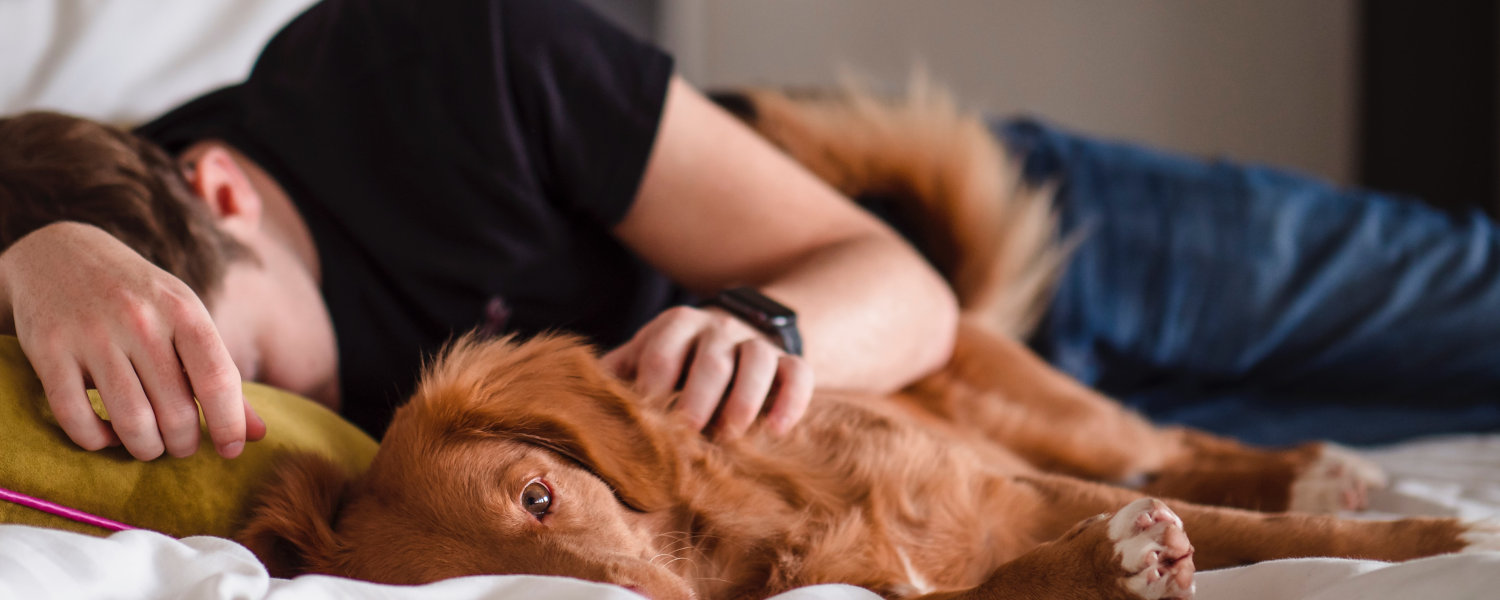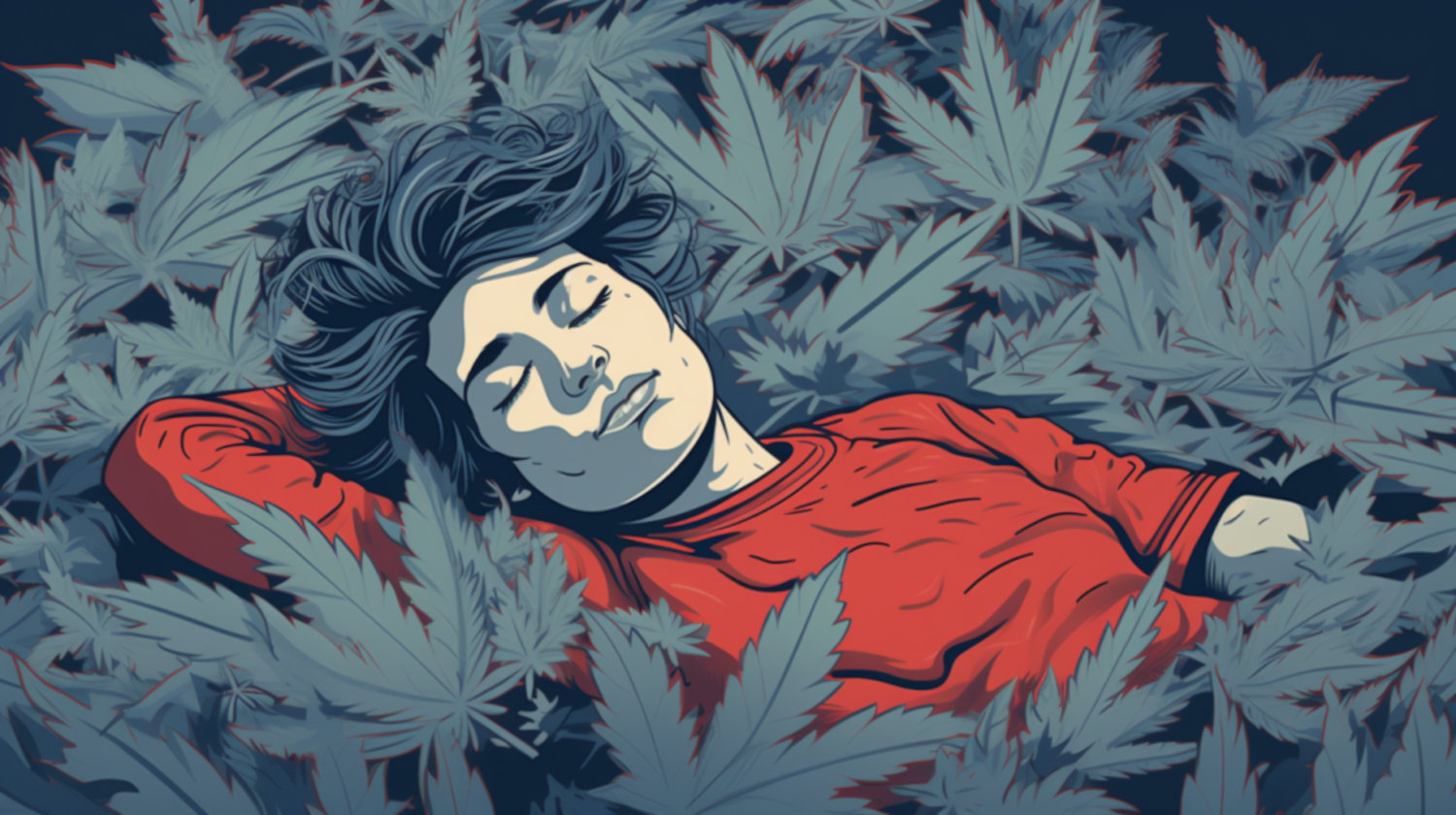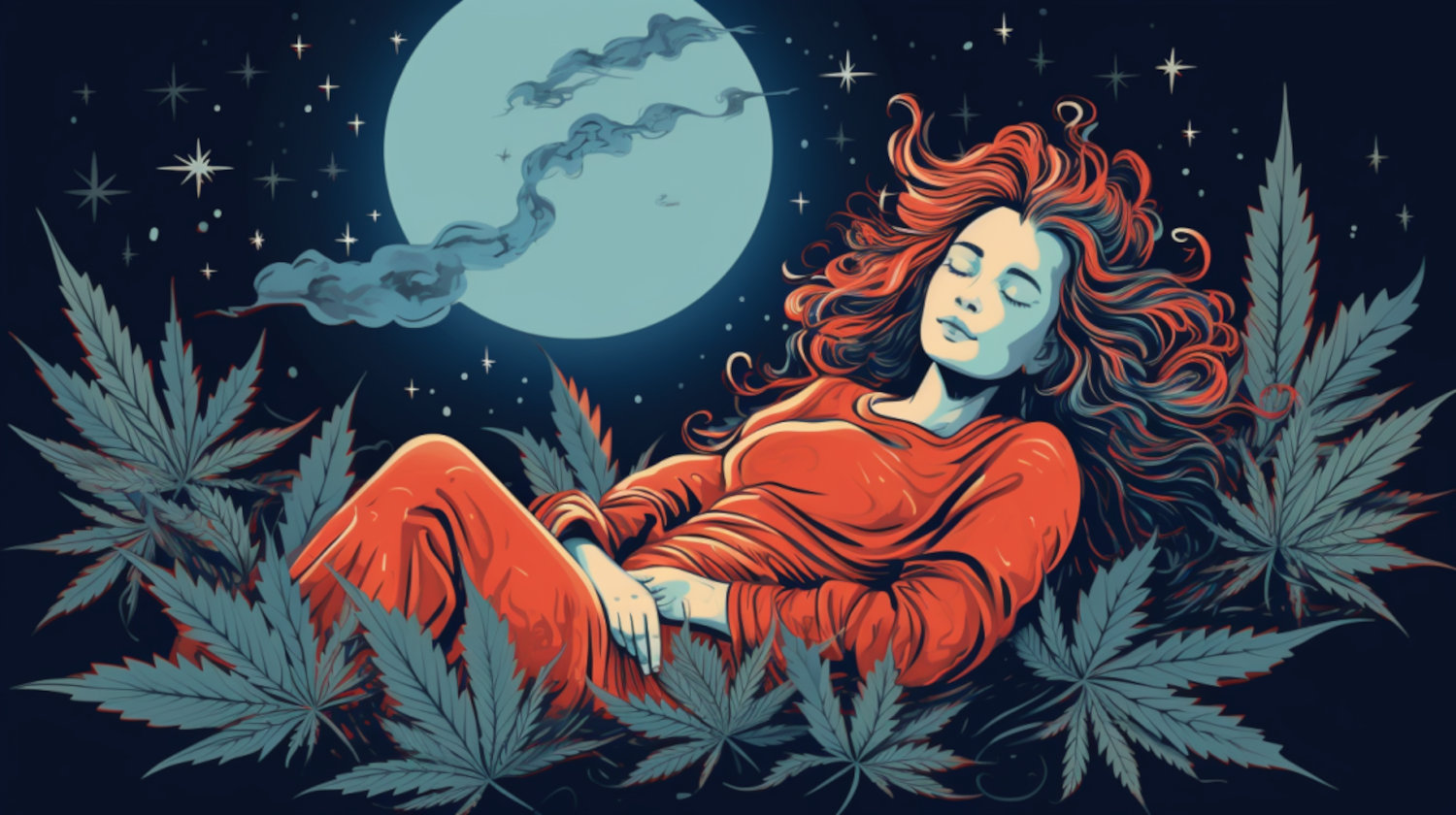Key Takeaways
- High doses of THC may be associated with negative changes in sleep.
- Avoid the terpenes limonene, pinene, and terpinolene.
- Haze strains, Durban Poison, Green Crack, and Pineapple Express tend to be among the worst for sleep.
There’s a wider plethora of cannabis cultivars available to patients now more than ever. With the sheer number of accessible cultivars, it can feel confusing for new patients to find something truly effective. Even worse is finding a cultivar that does the opposite of what one might need cannabis to do. For example, there are some ideal strains for sleep, while others are best suited for daytime use. What is the best cannabis for sleep, — and what’s the worst?
Can Weed Help With Sleep?
Everyone is different, so the right strains for sleep for one consumer may vary widely from another. For example, do “indica” labeled strains make you sleepy? Some consumers find they can’t sleep without weed, adding to the complexity of the topic.
Other consumers use cannabis as a sleep aid, but what exactly happens when you sleep high? What strains may work best for individual sleep needs?
According to current research, CBD, THC, and other cannabis compounds modulating our CB1 receptors might be a factor. Cannabis may affect our endocannabinoid system, which plays a role in our sleep-wake cycles. A 2023 study even found that patients with insomnia who used cannabis had improved sleep experiences.1
In a separate clinical review, 15 patients out of 38 (39% of participants) reduced or completely discontinued prescription sleep medication. An impressive 71% reported improvement in their sleep or sleep-related condition upon follow-up.2
These results may lend promise to the cannabis potential for not just insomnia but other sleep-related conditions as well, including sleep apnea, restless leg syndrome, and more.
Further research shows for cannabis to assist with sleep, it may depend on the cultivar and its contents. As it stands, researchers have hypothesized that endocannabinoid action triggers sleep-promoting transmitters, like adenosine. However, higher doses of THC are also associated with seemingly negative changes in sleep, like reduced REM and reduced stage three sleep.
The same research shows that cultivars with low THC may have a more hypnotic effect, decreasing the time it takes to fall asleep and increasing slow-wave sleep. It’s for this reason that cannabis might be an effective sleep aid for some patients, including those with chronic pain.3
Which Terpenes Should You Avoid With Sleep?

While some cannabis strains may help consumers sleep, not every cultivar was created equal. There is more to the choice than finding the right “sativa” or “indica” labeled cultivar for sleep. The best strains for sleep include varieties rich in sleep-promoting compounds.
Research shows that some terpenes, like myrcene, may intensify the relaxation properties of a cultivar. Conversely, low-myrcene cultivars may produce a more energizing effect.4
Other terpenes, which are the aromatic molecules that influence part of each cultivar's flavor, aroma, and effects, may disrupt sleep patterns. Patients self-report that cultivars high in the following terpenes may have the opposite effect of inducing sleep.5
Limonene
A 2020 study shows that limonene may have mood-enhancing properties, which may interfere with sleep.6
Pinene
Pinene is known for its alertness and memory-enhancing properties, which can counteract the sedative effects of other terpenes.
Research in 2017 shows pinene's potential to increase energy and focus. These effects can disrupt sleep, especially if pinene is consumed in higher quantities.7
Pinene levels across cannabis strains can vary, especially those that are commercially available. Small amounts may affect someone especially sensitive to its stimulating properties.
Terpinolene
Cultivars high in terpinolene are often described as having uplifting and energetic effects. Research shows that the terpene may act as a central nervous system stimulant, which may lead to difficulties falling or staying asleep for some patients.
The terpinolene concentrations in commercially available products are typically lower than in research strains. However, the terpene is often found in “sativa” and “sativa-dominant” labeled varieties. Consumers, especially those with a heightened sensitivity, may still find it disrupts sleep.8
What to Avoid When Choosing Strains for Sleep
Some may wonder: does “indica” make you sleepy? Which is best, a “sativa” or “indica” labeled strain for sleep? There are several factors patients should avoid when choosing the right cannabis strains for sleep.
Patients should start by determining what terpenes and cannabinoids the strain contains and at what levels, ruling out varieties with unhelpful terpenes. It’s best to focus on what compounds will work together for the most optimized entourage effect.
When choosing a strain for sleep, consumers might want to avoid strains high in reportedly energizing terpenes. Limonene, pinene, and terpinolene are all potentially energy-inducing compounds in certain concentrations and in companion with other terpenes and cannabinoids. Try to steer clear of these compounds when seeking restful sleep.
Likewise, certain strain families are renowned for their stimulating effects. For example, the Haze and Diesel lines are often known for their uplifting properties, making them potentially less suitable for inducing sleep for individuals. THCV-rich cultivars may also invigorate some consumers. Early research shows that they may increase energy and decrease fatigue.
On the other hand, some cannabis compounds may make it easier to sleep. Patients report that cultivars labeled “indica” or “indica-dominant” are typically higher in sedative-inducing terpenes. For this very reason, many consumers lean towards indica-labeled varieties to relax in the evening. These cultivars often have higher quantities of terpenes, like myrcene and linalool, which promote sleep and relaxation.
Linalool, in particular, brings with it the scent of lavender. It likely possesses both sedative and narcotic properties that may make it easier to fall asleep and stay asleep longer.9
The 5 Worst Strains for Sleep

Everyone is different, so the best strains for sleep will vary. It's important for patients to understand how to find their best sleep-inducing strains. Below are five strains that patients frequently report as being unhelpful for sleep (though you may prefer these if you are trying to avoid sleep-inducing effects of cannabis).
Super Silver Haze
A sativa-dominant hybrid, Super Silver Haze, is famous for its energetic and euphoric effects. It comes from combining the genetics of Skunk #1, Northern Lights #5, and Haze. The result is reported to have consumers feeling creative and uplifted. With a terpene profile including caryophyllene, limonene, and low myrcene, its contents may contribute to its invigorating presence, making it a favorite for daytime.
Super Lemon Haze
Super Lemon Haze is another beloved cultivar. It has around 19% THC and resulted from merging Lemon Skunk with the famous Super Silver Haze. The combination is said to deliver a citrusy flavor and an energetic high. Patients report feeling not just uplifted and energized but also creative. Myrcene takes a backseat to limonene and caryophyllene, potentially making it unsuitable for restful sleep. Instead, it is often reported to promote alertness and physical activity.
Durban Poison
Considered to be a landrace cultivar, Durban Poison sits with an average THC content of around 20%. It's favored for daytime use thanks to its clear-headed and uplifting effects. Its low myrcene and higher terpinolene, limonene, and ocimene terpene profile may contribute to its energizing nature. Patients often report feeling focused and creative, which hinders the ability to unwind and fall asleep.
Green Crack
Another famous cultivar, Green Crack, has around 15% THC and is well-known for its potent, energizing effects. Green Crack's primary terpenes are caryophyllene, limonene, humulene, and pinene, with low concentrations of myrcene. This may promote a sharp focus and energetic high. Patients often report it to heighten alertness and increase restlessness, so it may not be ideal for sleep.
Pineapple Express
Pineapple Express is one of the most legendary cultivars, famous for its tropical flavor and invigorating potential. Its dominant terpenes are pinene and caryophyllene, with a dash of myrcene. The combination often creates a stimulating and euphoric experience. Patients report feelings of creativity and energy.
References
- Low ZXB, Lee XR, Soga T, Goh BH, Alex D, Kumari Y. Cannabinoids: Emerging sleep modulator. Biomedicine & Pharmacotherapy. 2023;165:115102. doi:https://doi.org/10.1016/j.biopha.2023.115102 ↩︎
- Vaillancourt R, Gallagher S, Cameron JD, Dhalla R. Cannabis use in patients with insomnia and sleep disorders: Retrospective chart review. Can Pharm J (Ott). 2022;155(3):175-180. Published 2022 Apr 15. doi:10.1177/17151635221089617 ↩︎
- Edwards D, Filbey FM. Are Sweet Dreams Made of These? Understanding the Relationship Between Sleep and Cannabis Use. Cannabis Cannabinoid Res. 2021;6(6):462-473. doi:10.1089/can.2020.0174 ↩︎
- Surendran S, Qassadi F, Surendran G, Lilley D, Heinrich M. Myrcene—What Are the Potential Health Benefits of This Flavouring and Aroma Agent? Frontiers in Nutrition. 2021;8. doi:https://doi.org/10.3389/fnut.2021.699666 ↩︎
- Lewis MA, Russo EB, Smith KM. Pharmacological Foundations of Cannabis Chemovars. Planta Medica. 2017;84(04):225-233. doi:10.1055/s-0043-122240 ↩︎
- Sommano SR, Chittasupho C, Ruksiriwanich W, Jantrawut P. The Cannabis Terpenes. Molecules. 2020;25(24):5792. Published 2020 Dec 8. doi:10.3390/molecules25245792 ↩︎
- Weston-Green K, Clunas H, Jimenez Naranjo C. A Review of the Potential Use of Pinene and Linalool as Terpene-Based Medicines for Brain Health: Discovering Novel Therapeutics in the Flavours and Fragrances of Cannabis. Frontiers in Psychiatry. 2021;12. doi:https://doi.org/10.3389/fpsyt.2021.583211 ↩︎
- Ito K, Ito M. The sedative effect of inhaled terpinolene in mice and its structure–activity relationships. Journal of natural medicines. 2013;67(4):833-837. doi:https://doi.org/10.1007/s11418-012-0732-1 ↩︎
- Cui J, Li M, Wei Y, et al. Inhalation Aromatherapy via Brain-Targeted Nasal Delivery: Natural Volatiles or Essential Oils on Mood Disorders. Frontiers in Pharmacology. 2022;13. doi:https://doi.org/10.3389/fphar.2022.860043 ↩︎
The information in this article and any included images or charts are for educational purposes only. This information is neither a substitute for, nor does it replace, professional legal advice or medical advice, diagnosis, or treatment. If you have any concerns or questions about laws, regulations, or your health, you should always consult with an attorney, physician or other licensed professional.




